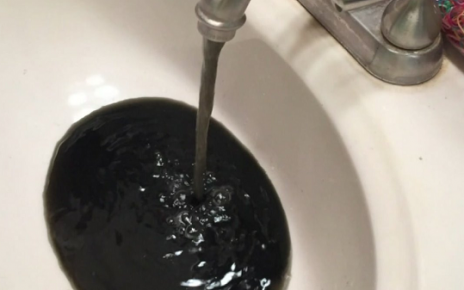Monsanto is quite possibly the world’s most hated company, but few know much of the history of this multi-national giant.
“When a company claims its product improves on nature, many consumers happily declare the product an example of scientific progress. Equally powerful, though, is the inclination toward skepticism.” – Jesse Hicks
This skepticism is the reason millions now understand the shady and insidious nature of corporations like Monsanto. In fact, in a 2013 poll Monsanto was declared the “most evil corporation” in the world, beating McDonald’s and even the Federal Reserve by a wide margin. However, not everybody knows just how far back this corruption truly goes.
Here are five things you may not have known about Monsanto, but should.
1. Monsanto’s First Product Was a Toxic Chemical Sweetener called Saccharin
When Monsanto was first created in 1901, its main purpose was to sell a chemical called saccharin to the Coca-Cola corporation as an artificial sweetener. Having known it to be a dangerous carcinogen, a government body called the Referee Board of Consulting Scientific Experts, created under president Roosevelt in 1910, sued Monsanto to stop the production of the new chemical sweetener. It decided that the levels of saccharin people were consuming were over the limit considered ‘safe,’ and in 1912 the use of saccharin was prohibited in processed foods. Monsanto’s industry lawyers fought back, and the ban was over-turned, marking the first of many legal incidents that would pave the way for Monsanto’s current multi-faceted chemical onslaught on humanity.
2. Monsanto Hid Evidence of Toxic PCBs
Commonly used in lubricants, hydraulic fluids and liquid sealants, PCB’s have been linked to immune system, developmental, and reproductive disorders and are quite potent carcinogens. Although PCB’s were banned in 1979, they can still be found in nearly all animal and human blood and tissue samples around the globe, and because they are so persistent in the environment, they are considered to be “one of the gravest chemical threats on the planet.” But the company’s own documents show that great lengths were undertaken to make sure the public was uninformed about the dangers of PCB’s, even going so far as to start, “urging scientists to change their conclusions to downplay the risks of PCB exposure.” Even the Navy in 1956 refused to use one of Monsanto’s products that contained PCB’s claiming that it was “just too toxic to use in a submarine.”
3. Monsanto Helped Develop the Atomic Bomb
In 1943, Monsanto began working on a subsidiary research and development sector of the Manhattan Project in Dayton, Ohio, called the Dayton Project. This project was primarily focused on the purification and production of plutonium, which was used to begin the chain reactions in atomic bombs, ultimately resulting in the widespread radioactive pollution of testing sites, and the deaths of an estimated 129,000 people at Hiroshima and Nagasaki. The Dayton Project ended up costing $3,666,507 ($44.5 million in today’s dollars), and the world is still engaged in a nuclear arms race.
READ: The Complete History of Monsanto, The World’s Most Evil Corporation
4. Monsanto’s Agent Orange is Still Devastating Vietnam
During the Vietnam war, the United States sprayed over 72 million liters of toxic herbicides and defoliants on farmlands and forests, most of which was Monsanto’s agent orange with the chemical component Dioxin. Over a million Vietnamese were exposed to this poison as were more than 100,000 American and allied troops. Dr. James Clary, a scientist who worked to design the chemical spray tanks for use in Vietnam told Senator Tom Daschle in 1988:
“When we initiated the herbicide program in the 1960s, we were aware of the potential for damage due to dioxin contamination in the herbicide… However, because the material was to be used on the ‘enemy,’ none of us were overly concerned. We never considered a scenario in which our own personnel would become contaminated with the herbicide.”
As a result, children in Vietnam are still being born with life-altering birth defects, devastating the lives of Vietnamese families, and many American veterans have suffered terribly as a result of exposure.
5. Friends of Monsanto Faked Studies Claiming Aspartame to be Safe
G.D. Searle, LLC, a partner of Monsanto, produced over a hundred faked studies claiming aspartame, a neuro-toxic sweetener is safe for human consumption. Meanwhile, the FDA’s scientists concluded that aspartame causes tumors and large holes in the brains of rats, before eventually killing them. The FDA responded by holding a grand jury investigation into G.D. Searle for, “concealing material facts and making false statements.” During the investigation, G.D. Searle urged insider Donald Rumsfeld, who had served as Secretary of Defense under president Gerald Ford, to become CEO. A few months later, the federal prosecutor who had previously convinced the grand jury to investigate Searle, Samuel Skinner, was given, “an offer he couldn’t refuse,” and went to work for Searle’s law firm. The investigation was subsequently stopped.
Conclusion
Monsanto now controls the largest share of the global GMO seed market. In turn, the US gov’t spends hundreds of millions annually funding the aerial spraying of Monsanto’s flagship herbicide Roundup, causing massive devastation to the environment and our health. According to the Denver Post in 2013, $277 billion dollars in subsidies were given to agribusiness giants like Cargill and Monsanto. In 2015 alone, Monsanto’s total lobbying expenses were $4,330,000. That’s over 4 million dollars spent on bribing politicians to work in favor of Monsanto’s interests, down from over $9 million spent on lobbying in 2008. As it turns out, not much has really changed since the early days of this shady corporate entity.
Sources: http://www.chemheritage.org/discover/media/magazine/articles/28-1-the-pursuit-of-sweet.aspx, http://www.chemicalindustryarchives.org/dirtysecrets/annistonindepth/toxicity.asp, http://www.mercola.com/article/aspartame/fraud.htm




